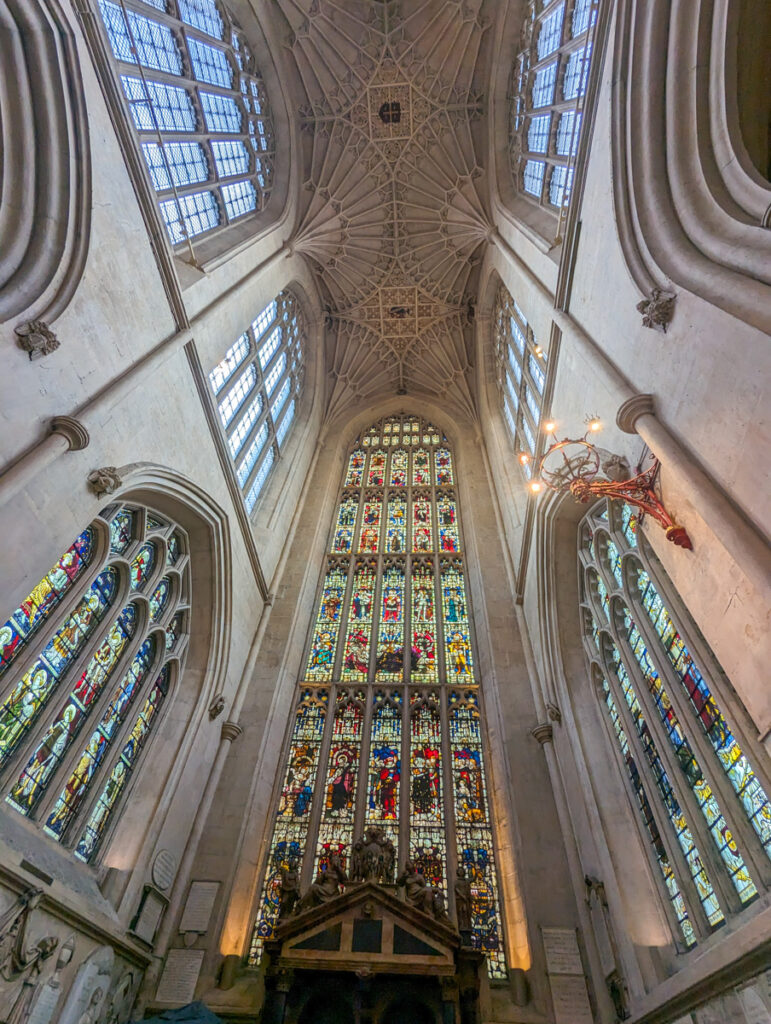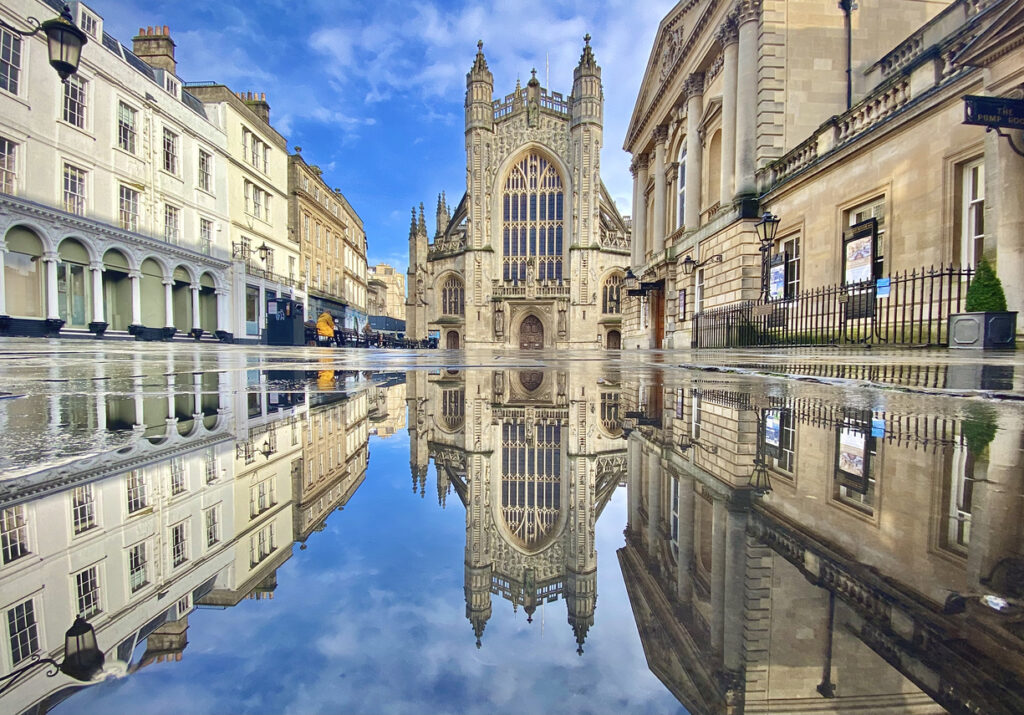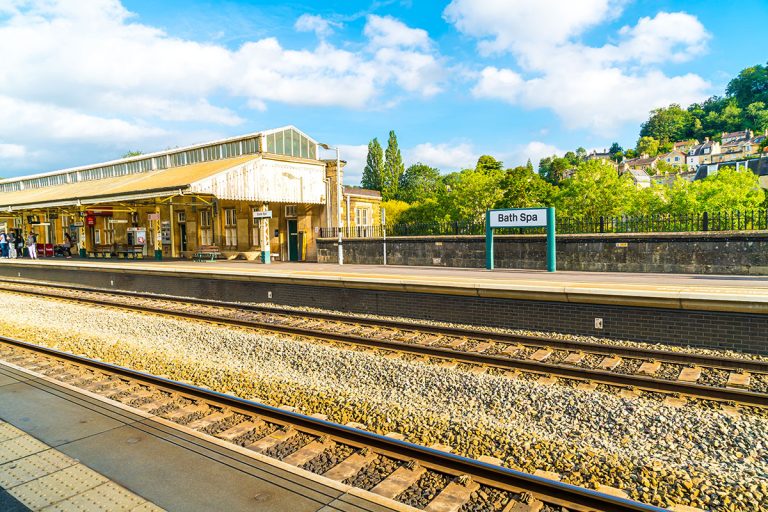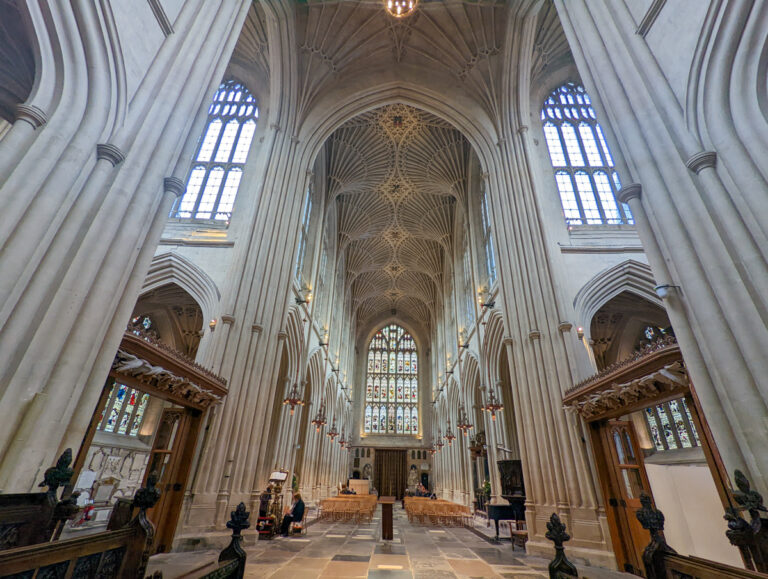These Bath Abbey facts will amaze you
Bath Abbey is one of the West Country’s most fascinating buildings.
With a history spanning back to the 7th century, you can bet that the place of worship has been home to many a fascinating story over the years!
Here are some of my favourite facts about Bath Abbey.
The Abbey we know today was rebuilt after a dream by Bishop Oliver King

Bath Abbey is the product of dreams!
In 1499, Bath Abbey was in a ruinous state. Bishop Oliver King had a dream about angels climbing up an olive tree, which he took to be a sign that HE should be the one to build the tower.
He redesigned it, but sadly passed away before it was completed. Look out for engravings of him ascending to heaven on an olive tree!
London may have Big Ben, but Bath has Great Ethel
Bath Abbey’s biggest bell is one of the largest in Somerset, and is called “Great Ethel”.
She is the same size as a rhino at about 1.7 tonnes, and while she stays in her place nowadays, she has historically been nicknamed the “troublesome tenor” thanks to her tendency to fall out of place. She once fell through the floor, into the chamber underneath, but thankfully got caught on the rigging to prevent her from falling into the bellringing chamber!
The clock winder had to drive the clock by manpower

Bath Abbey didn’t have electricity until 1979, which meant that not only was it lit by lanterns, but the clock was driven by manpower!
“This tower was one huge grandfather clock”
The clock driver was also responsible for winding the clock forward and back. When he wound it forward, it wasn’t a problem – but winding it backwards meant that he had to hold the clock in place for a whole hour!
The ceiling is just four inches thick

Bath’s incredible vaulted ceiling is just four inches thick. It’s held up by keystones, which lock its elements in place.
“We are relying on Medieval technology” Hannah, who showed me around the tower, said. “But we haven’t had a problem so far!”.
Many of the abbey’s original resources are sitting at the bottom of the ocean!
Like many churches in England, Bath Abbey fell into disuse during the dissolution of the monasteries.
Many of the resources that it had built up were stripped from the building and sent to Spain. However, the ship sunk on its way to Spain and now, many of these historic treasures sit at the bottom of the ocean!
Post-dissolution of the monasteries, Queen Elizabeth I granted permission for a monetary collection for a new abbey. This is more or less the abbey you see today.
The Abbey was once called the “Slaughterhouse of Bath” because the bells sounded so bad
While the Abbey’s bells sound lovely nowadays, it wasn’t always this way! At one point, the Abbey needed new bells and bought some cheap ones from nearby Keynsham.
They only realised why they were cheap when they took them back to the Abbey and hoisted them up to the tower. They sounded awful – so bad that the Abbey was nicknamed “The Slaughterhouse of Bath!”.
It’s 49 metres tall and is the highest point in Bath

The city of Bath is a UNESCO World Heritage Site, which means that it has certain protective laws.
One of these is that nobody is allowed to build higher than the top of Bath Abbey! So, the top of the Abbey’s tower is the highest point in Bath city centre.
You can take a Tower Tour to reach the top (and learn about the bells and other building secrets on the way!), which is 212 steps each way (some very steep).
The first church was Anglo-Saxon

Bath Abbey’s history actually begins with the Anglo-Saxons, who took over Bath and most of England from 400 AD (before this, it was Roman for 350 years). The first church on the site of Bath Abbey was a Saxon convent, but a Norman Church was built on the site in 1066 (after the Battle of Hastings).
It’s sometimes called the “Lantern of the West” due to its stained glass windows

A whopping 67% of Bath Abbey’s walls are in fact stained glass windows!
Due to this, it’s sometimes called “The Lantern of the West”.
It’s home to 52 stained glass windows in total, many of which depict different scenes throughout Bath’s history.
They keep discovering new stained glass windows too – the most recent one was found in 2010!
The first king of all of England was crowned here
Last but certianly not least, my favourite Bath Abbey fact was that the first king of England was crowned in, not Westminster, but Bath Abbey!
Edgar, who was crowned in 973 AD, was the first official king of a united England – prior to his coronation, monarchs ruled over different regions.
Did you know these Bath Abbey facts?
Fascinating, right? Arm yourself with these Bath Abbey facts before your next trip!
And don’t forget to check out these posts:
Liked this story? To stay updated with this and all my other South West England news, remember to sign up to my newsletter, like my Facebook page and join my Facebook group!






